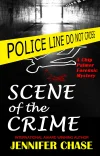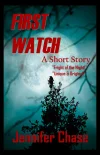
Photo courtesy of withmydegree.org.
Our modern notions of crime and punishment are the result of millennia of human advancement. From antiquity to modern times, criminal justice and criminology have evolved due to significant contributions from a diverse array of civilizations. Here is a brief timeline of some of the most notable contributions.
Sumer (3500 BC)
Sumer is generally accepted as the first known urban civilization. The ancient land of Sumer is located in modern-day Iraq.
Before Sumer, people lived in small agricultural communities. Once Sumer developed, city-states appeared. This led to the formation of primitive governments. In order to control the crime that naturally derives from urban life, these governing bodies began to establish the origins of law and order.
Rise of the Romans (500 BC)
The Roman Republic established itself as Western Civilization’s first “super power.” Law and order was maintained by soldiers, who would walk the streets of cities, towns and villages. The mere presence of the soldiers was a solid deterrent, and it helped keep crime under relative control.
Plato (428 – 347 BC)
As a student of Socrates and teacher of Aristotle, Plato introduced the concept that people are inherently good. This belief greatly influenced the thoughts on crime and punishment as the centuries progressed.
Aristotle (384 – 327 BC)
Expanding on the teachings of Plato, Aristotle’s views relied heavily on scientific observation. As the tutor to Alexander the Great, Aristotle would impart upon him the significance of science and its impact on decision-making. These teachings had a heavy influence on early forensic science and crime scene investigations.
Assassination of Julius Caesar (44 BC)
Many historians believe that the first historical recorded autopsy was conducted upon Julius Caesar.
De Materia Medica (50 – 70 AD)
Widely considered to be the groundwork for forensic toxicology, De Materia Medica, is a publication that categorizes an array of flora. Written by Greek physician Pedanius Dioscorides, the book discusses both the medicinal benefits and the poisonous aspects of various plants.
Frankpledge (1035)
After the collapse of the Roman Empire, the Western world was highly destabilized. This led to families and small communities policing themselves. After hundreds of years of no centralized policing, the English concept of Frankpledge was introduced.
Under this concept, males over the age of 12 were formed into groups of ten. Their job was to capture and detain members of their own clan who committed a crime. This was all done under the supervision of a Constable, who was appointed by the Crown.
Summa Theologica (1265 – 1274)
Exploring the concept of Natural Law, Saint Thomas Aquinas wrote the Summa Theologica in furtherance of Plato’s concept of people’s inherent “goodness.” Aquinas opined that crime was both an affront to God and society. And that criminal behavior damages both the victim and the soul of the criminal.
Justices of the Peace (14th Century)
The English Crown began appointing Justices of the Peace to assist Constables in their efforts to control crime. These magistrates issued warrants, held arraignments and tried minor criminal cases.
Social Contract (1625 – 1762)
Introduced by John Locke, the theory of the social contract discusses the various roles of people and government in maintaining a balanced society. Essentially, the theory holds that people cede authority to the government in exchange for security and prosperity.
At this point in history, theories of crime and punishment shift from theological to secular.

Insane Asylums (1750)
The emergence of insane asylums across Europe led to the study of inmates. People were considered “insane” for various archaic reasons, and the people who studied them were known as “alienists.” The work conducted by the alienists laid the foundation for modern psychiatry.
Adolphe Quetelet (1827)
Using national crime statistics from France, Belgian statistician Adolphe Quetelet determined that there were correlations between demographics and crime. His studies led criminologists to understand how a person’s age, gender, education and socioeconomic status could have bearing on their propensity for criminal behavior.
Metropolitan Police Services (1829)
Established in London, the Metropolitan Police Services became the first full-time, professional and uniformed police force. Each officer was issued a copy of Sir Robert Peel’s “9 Principles of Policing.”
Prison (1850)
The concept of a modern prison first arose in Europe during the mid-19th Century. Doctors were given access to the prisoners, so that they could conduct studies into criminal behavior. Governments were particularly interested in the doctors’ findings, as it allowed them to understand what prompts criminal behavior.
As governments became stronger, the officials demanded empirical evidences, so that they were better equipped to control the populace.
Kodak (1888)
The Kodak camera, by George Eastman, was a revolutionary piece of equipment on numerous levels, including its impact on policing. As a result of the easily available Kodak camera, investigators could now memorialize crime scenes.
Crime Lab (1910)
The father of forensics, Dr. Edmond Locard, established the first modern crime lab in Lyon, France.
DNA Evidence (1988)
For the first time ever, DNA evidence was used in criminal court. As a result of DNA evidence, Tommie Lee Andrews was found guilty of rape in a Florida courtroom.
Since 1988, there have been many significant advancements regarding both the manner in which crimes are investigated, as well as the methods for convicting and punishing the offender. Not only do our modern advancements help convict wrongdoers, but they also assist us in exonerating the wrongly accused.
What developments would you like to see in the future?
***
Please join me:
Author Blog: https://authorjenniferchase.com/
Book & Crime Talk: http://blogtalkradio.com/jennifer-chase
Books: Compulsion Dead Game Dark Mind Dead Burn Dark Pursuit
Silent Partner Body of the Crime Screenwriting
***
JUST RELEASED! GRAB A COPY FOR ONLY 99CENTS DURING THE PROMOTIONAL BLOG TOUR!
DEAD COLD, An Emily Stone Thriller

Here are some recent Reviews of DEAD COLD:
“Real and Vivid. I liked the way that Jennifer Chase wove her tale. Characterization was huge in this novel. The characters were all very well developed and had their own motivations and faults. It made them seem more real to me as the reader. I also really liked the flow of this novel. “ ~ Texas Book Nook
“Dead Cold is not for those with weak hearts or nervous dispositions. Every page will have your heart pumping so much you’ll feel like you’re running a marathon. The story gets off to a cracking start in the prologue with high speed action from the first line.” ~ Darryl Greer for Readers’ Favorite
“Reading a Jennifer Chase novel and especially these Emily Stone novels reminds me of when James Patterson was at the top of his game. Jennifer’s writing has that same elusive quality and it makes for brilliant novels. Emily’s character is awesome and Dead Cold is not only my favorite novel in the series but also has the best conceived plot. Emily’s character was made for the big screen, I hope she makes it there because films of these books would be great.” ~ Amazon Reviewer
“Dead Cold is its own creature with a gritty sense of reality that makes it feel wholly authentic. Given Chase’s qualifications in serial crime and criminal profiling this shouldn’t come as a surprise and here she uses that knowledge too but as good as the characters and dialogue are, Dead Cold is at its best when it focuses on twisted nature of Stone’s latest assignment and its consequences” ~Book Viral
“Wow, this one really delivers in many areas. It is a thrilling novel with teeth. Yes, it took a bit of catching up to understand what was going on, but once in the heart of it, Jennifer Chase has the reader hooked. As far as characters, plot, and flow, everything was very well developed and smooth.” ~ On A Reading Bender



































I am a private detective and I am very interested in historical criminalistics and criminology
LikeLiked by 1 person
It always fascinates me. I pick up old books that refer to criminology and it’s quite interesting the perception from previous decades of crime and criminals. I love finding new forensic technologies in other countries besides the US. Thank you so much for stopping by my blog. All the best.
LikeLike